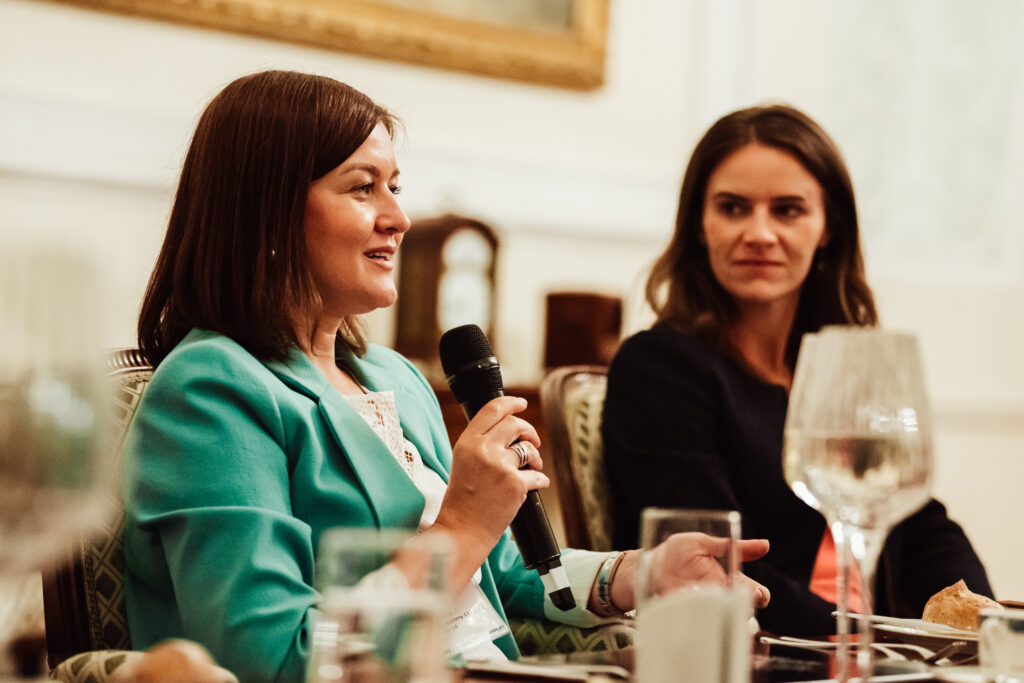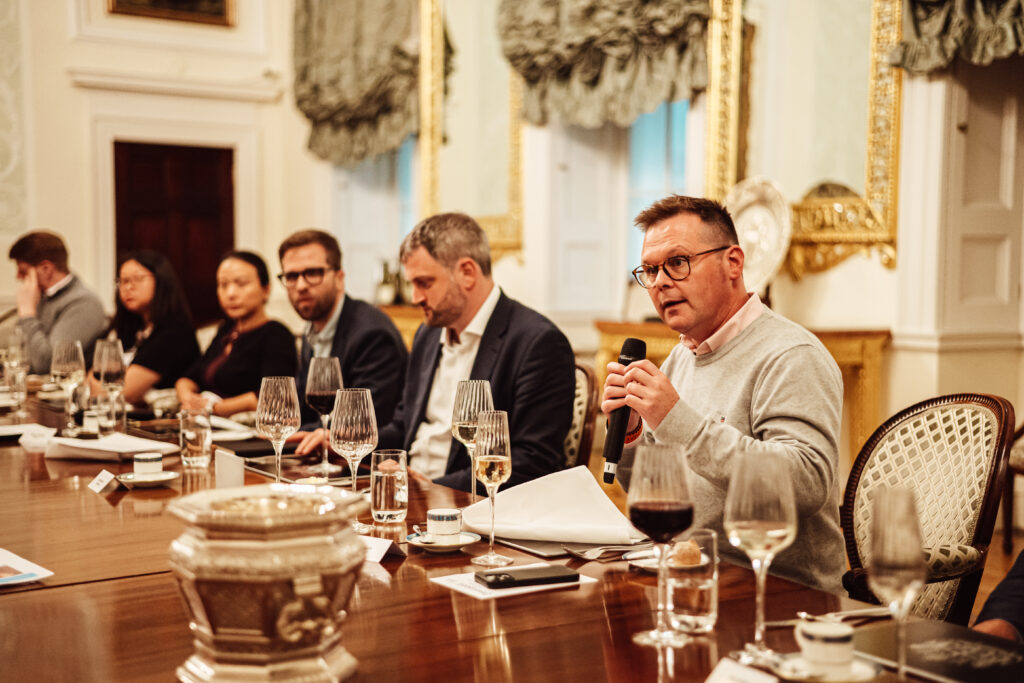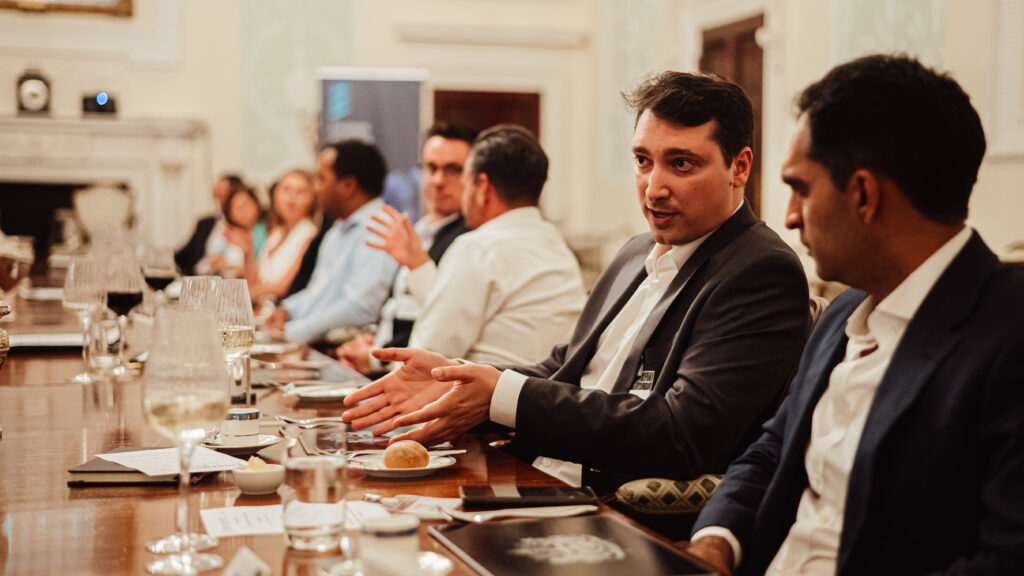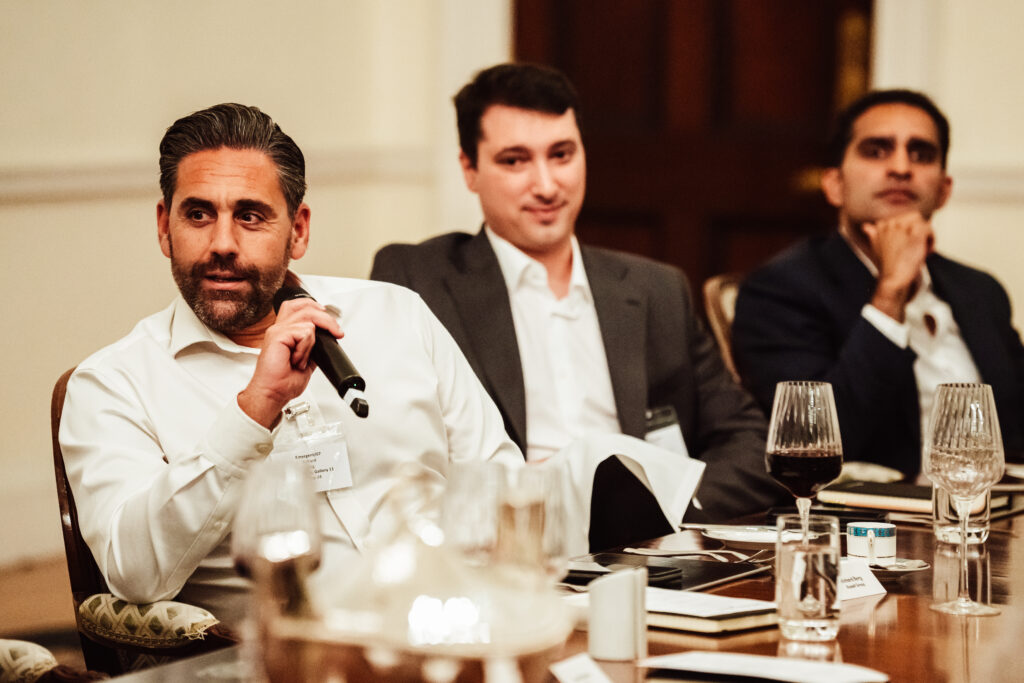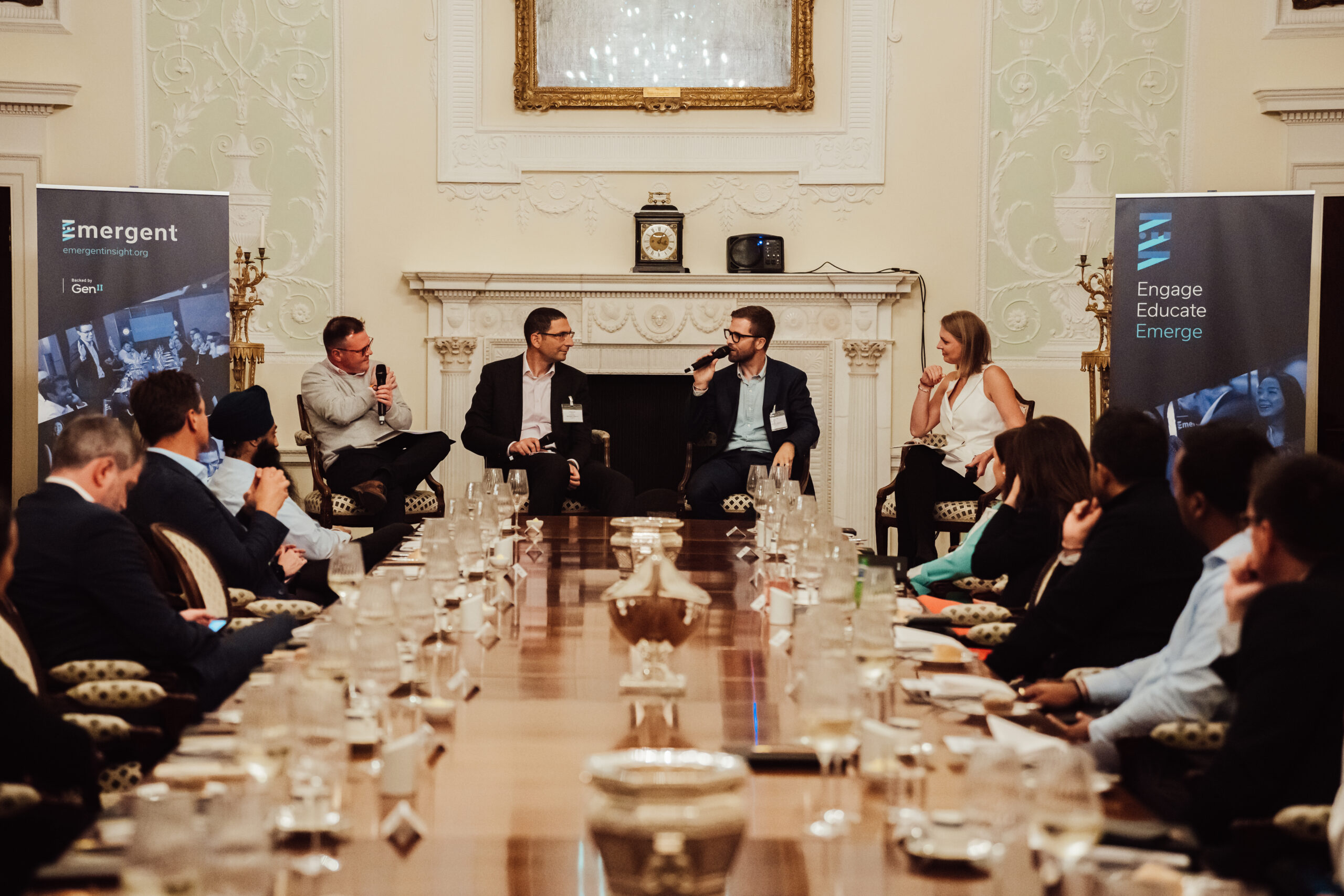
The Adam Room is a treasure from 1760 Bowood House, painstakingly relocated to Lloyd’s headquarters on Lime St.

Programme Founder, Emergent / Head of Marketing, Gen II
Lloyd’s of London, with its deep roots and storied history, offered an iconic setting for a panel discussion on one of the most critical issues facing private capital businesses today — innovation and technology.
In the Adam Room, a space steeped in tradition yet paradoxically contained within a modern, inside-out office building, we explored the fundamentals of innovation in our industry. This juxtaposition felt particularly apt for our discussion — a combination of the ultra-modern Lloyd’s building with tradition at its core, mirroring the balance between old and new that financial services must navigate. The room itself is symbolic — a treasure from 1760s Bowood House in Wiltshire, painstakingly relocated and rebuilt in 1,500 numbered pieces at Lloyd’s headquarters on Lime Street.
The panel was led by Steve Gale of CTI Digital and three industry experts, representatives from Lloyd’s of London, legal firm K&L Gates, and Gen II. Each brought unique perspectives to the table, but all converged on three essential questions, First, how do we know what innovations to drive forward? Second, when should those innovative ideas be implemented? And finally, how can we innovate in a way that benefits our teams, our clients and the wider world?
Lloyd’s of London has a rich legacy of innovation. Known for creating the insurance market we know today, they’ve insured some of history’s most significant risks, including the Titanic (yes, that Titanic) and have ultimately been in the business of innovating and pushing boundaries for over 300 years.
Today, Lloyd’s is grappling with insuring emerging technologies like nuclear power and hydrogen, as well as the uncharted territory of products that don’t yet exist. How do you create insurance for something that hasn’t been invented?
Audience members heard from Iryna Chekanava about innovation’s “valley of death” — the precarious journey a product takes from R&D to commercialisation. This term doesn’t just apply to external market forces; it also reflects the internal dynamics within organisations, where good ideas can die if not properly nurtured and the wrong ones may succeed for the wrong reasons.
But at Lloyd’s, innovation isn’t just a buzzword; it’s embedded in the culture. The company encourages syndicates to explore new risks by allowing underwriters to take calculated risks on new ideas, without fear of penalties, which is, for example, how cyber insurance came to be.
Shaun Davies for Gen II brought the funds perspective to the conversation, underscoring that innovation is as much about timing as it is about ideas. For investors, choosing the right moment to implement new technologies is critical. “You don’t want to be too early to the market,” he explained, “because then no one is going to adopt it. But if you’re too late, you’ve missed your opportunity.”
In the private capital space, where Gen II operates, fund managers often prefer slow, cautious moves over disruptive leaps forward. It’s a challenge that many industries face — how to innovate at the right pace, so as not to overwhelm or alienate clients while still staying ahead of the competition. Shaun noted that their strategy hinges on understanding client needs and ensuring that any new technology aligns with their long-term goals.
Of course, there’s more to innovation than getting the timing right. Another challenge often lies in integrating new technologies into existing systems. “You can have the most advanced tech,” Shaun said, “but if it doesn’t fit into your core infrastructure, it’s useless.” His insight highlighted the importance of seamless integration and the need to avoid creating patchwork solutions that don’t offer long-term value.
Daniel Greenaway from K&L Gates rounded out the discussion by bringing in the legal and compliance angle — critical components of any innovation strategy in our industry.
Contrary to what some may think, the role of law isn’t to stifle innovation but to enable it, ensuring that clients can navigate new opportunities without taking on unnecessary risks. “Innovation doesn’t mean you get a free pass on compliance, it’s about finding ways to achieve your goals while adhering to legal frameworks and regulations.”
This is particularly relevant when dealing with complex, multi-jurisdictional challenges, where innovation often has to thread the needle between the fast-moving demands of the market and the slower, more deliberate pace of regulatory approval.
The key to innovation, we heard, lies in identifying client pain points early and finding solutions that fit within their risk appetite. Whether it’s streamlining document signing for fund closings or enabling new investment strategies, the best innovations often emerge from necessity.
Panellists agreed that true innovation starts with people. Shaun described the challenge of finding “unicorns” — those rare individuals who understand both technology and the subject matter at hand: private capital. These are the people who can bridge the gap between innovative ideas and practical implementation.
Once you find those talents, keeping them engaged and within your organisation becomes a challenge. Shaun spoke about the importance of training and investing in people, allowing them to grow and take ownership of new projects. “We’re a people business,” he said. “And that’s where innovation really happens — when you empower your people to take risks and make things happen.”
As the conversation moved to the audience the topic of AI came up, a force that’s rapidly shaping industries across the globe. While AI offers enormous potential, it’s also surrounded by uncertainty. Companies are beginning to experiment with AI-driven processes, but as one of our panelists pointed out, “The most important things aren’t always the most urgent things.” There’s still much to learn about the risks and opportunities of AI, but it’s clear that ignoring it is no longer an option.
AI might soon become as standardised as other tools in the business world, but for now, companies are treading cautiously, ensuring they fully understand the implications before diving in. One audience member summed it up well: “It’s not about the numbers; it’s about why we think it’s a good idea in the first place.”
Innovation is not a singular act but a continuous process, one that requires careful navigation of risks, a deep understanding of client needs, and, most importantly, a commitment to empowering the people who will drive the change.
And if the conversation in the Adam Room was any indication, that future is being built one thoughtful, strategic step at a time.
Discussion at Emergent/07
